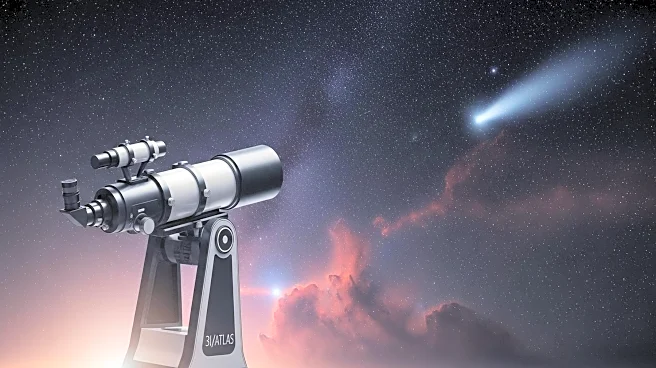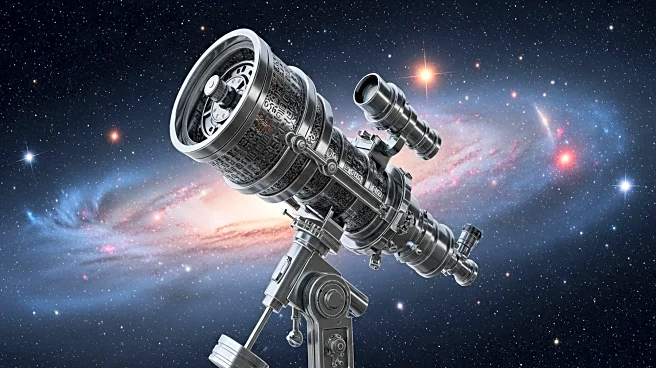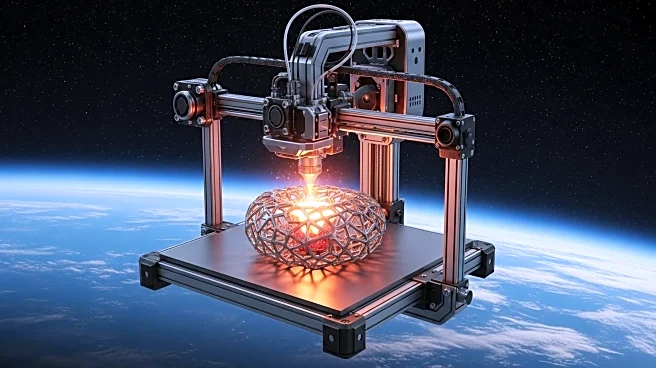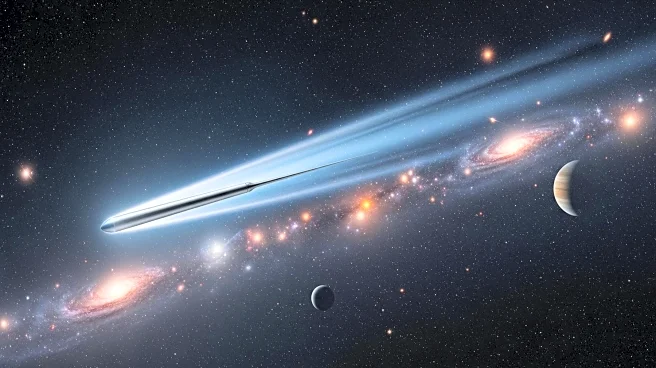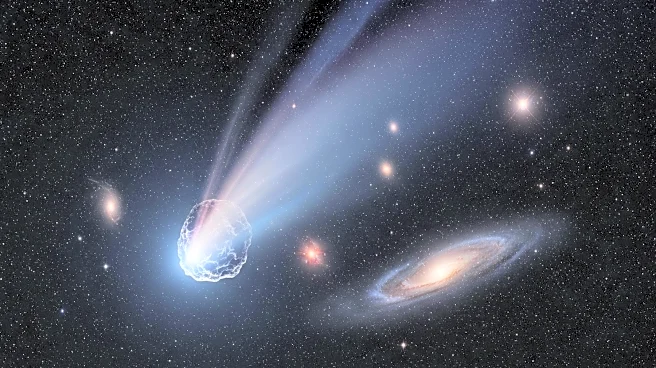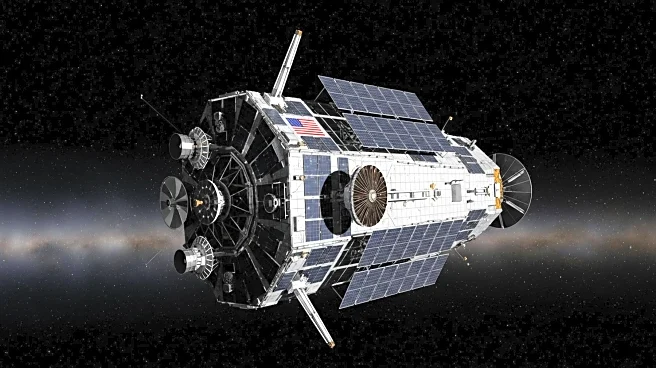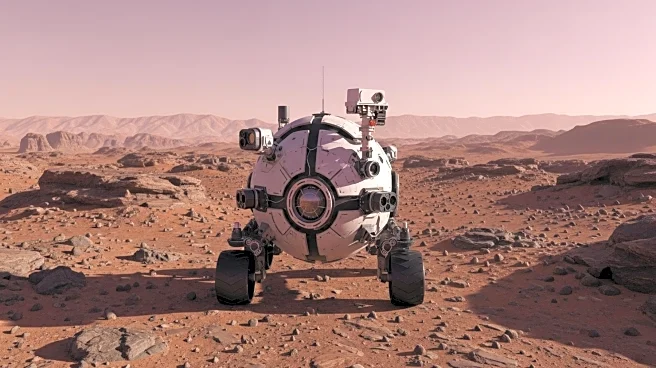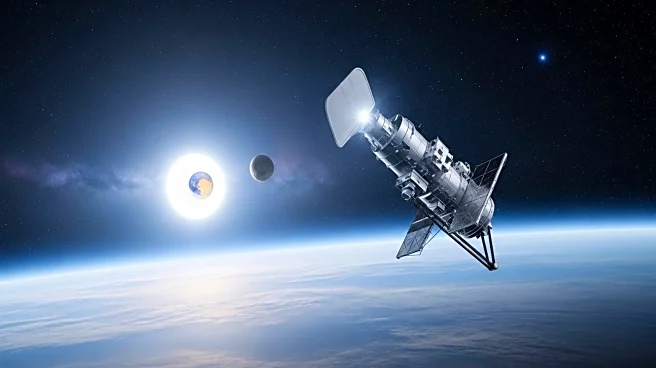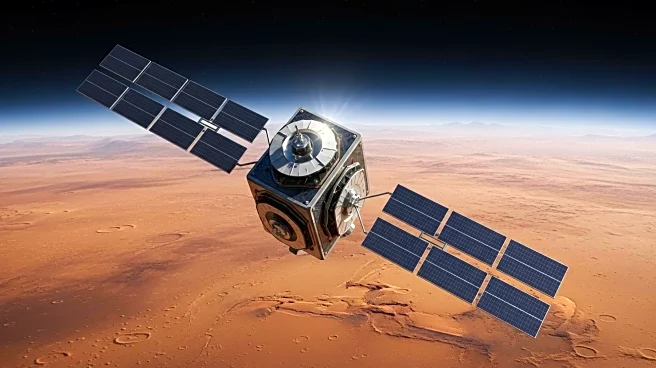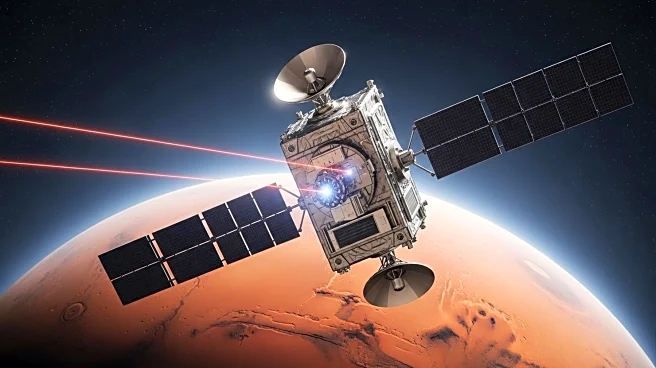What is the story about?
What's Happening?
NASA has confirmed the presence of a rare interstellar object, designated 3I/ATLAS, currently moving through the solar system. This marks the third confirmed interstellar visitor, following 'Oumuamua and 2I/Borisov. Discovered by the Asteroid Terrestrial-impact Last Alert System (ATLAS), the object was initially thought to be an asteroid but new data suggests comet-like activity. The object is traveling at approximately 134,000 mph and is expected to make its closest approach to the Sun on October 30, passing inside the orbit of Mars. Observations indicate signs of a coma and a short tail, leading to its classification as a comet. The object will not come close to Earth, maintaining a safe distance of 240 million kilometers.
Why It's Important?
The confirmation of 3I/ATLAS as an interstellar object is significant for planetary science, offering insights into materials from beyond our solar system. The discovery suggests that interstellar objects may be more common than previously thought, potentially passing through the inner solar system unnoticed. As detection methods improve, the identification of such objects is expected to increase, providing valuable opportunities to study extraterrestrial materials. The object’s comet-like activity offers a unique chance to observe and analyze its composition, contributing to our understanding of interstellar phenomena.
What's Next?
As 3I/ATLAS approaches the Sun, it is expected to brighten, becoming more accessible for observation by amateur astronomers. NASA plans to utilize ground- and space-based telescopes, including the Vera C. Rubin Observatory and the James Webb Space Telescope, to gather data. The object will temporarily be obscured by the Sun’s glare but will reappear in December as it exits the solar system, offering a final observation window. The Virtual Telescope Project is hosting a live feed of the comet’s journey, allowing the public to follow its progress.
Beyond the Headlines
The discovery of 3I/ATLAS raises questions about the frequency of interstellar visitors and their potential impact on our understanding of the galaxy. The study of such objects could lead to advancements in detection technology and methods, enhancing our ability to identify and analyze interstellar phenomena. The presence of comet-like activity in an interstellar object challenges existing assumptions and may prompt further research into the nature and behavior of these cosmic wanderers.
AI Generated Content
Do you find this article useful?
